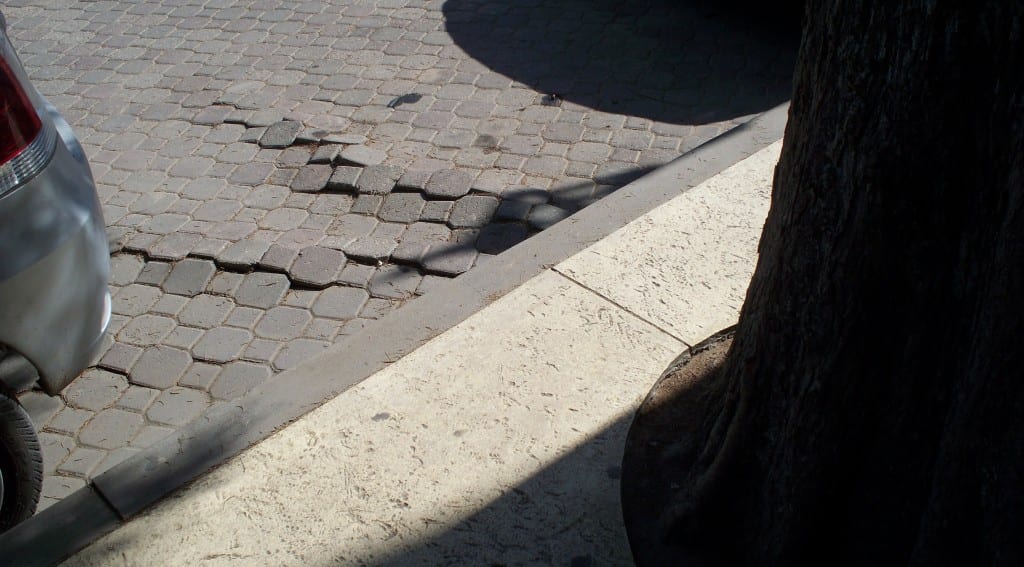Soil structure is fundamental for planting trees and the stability of roads, buildings, and other infrastructure. It refers to two things:
- The arrangement of soil particles, including silt, sand, and clay, that aggregate together
- The void pore spaces between these aggregate particles
In this blog, we discuss why appropriate soil structure is critical to healthy tree establishment and what landscape architects and other specifiers can do to ensure newly planted urban trees receive the conditions they need to thrive so they can provide the many benefits that mature trees offer.
Why We Need Soil Structure
Not every soil is conducive to the growth of trees and other plants, but urban soils are the least of all. Soil structure strongly influences tree growth and fertility, as it defines whether the tree will have rootable soil available and affects the movement of air, water, and other nutrients required for trees to flourish.
Effectively, the ‘architecture of the soil’ is usually the most critical element for the success or failure of urban trees. Well-structured soil functions like a reservoir, enabling the tree to accept, store, and transmit water and nutrients, allow roots to propagate, and allow the space required for life and the necessary biochemical exchanges for growth.
Trees & Compacted Soil
Too often, trees are planted in cramped planting pits with poor subsoil, resulting in inadequate growth. Roots immediately colonise the area underneath paved surfaces, damaging structural pavement.

There are different types of roots associated with tree establishment. Anchor roots function as structural elements and hold the tree in place in the soil. Fibrous roots (or feeder roots) intake nutrients and typically grow in the top 6″ (approx) 150mm of the soil. If appropriate irrigation and aeration ensure the required nutrients reach lower levels, they can be directed lower to avoid damage to paved surfaces. This “feeder zone” can extend between two and seven times the diameter of the canopy drip line. The feeder zone of any tree must be protected from compaction to ensure root establishment.
“Resistance to root penetration due to soil compaction will affect root establishment and the ultimate health of the tree.“
Tree roots are opportunistic and seek out favourable growing conditions. Moisture and air trapped between impermeable pavements and compacted soil attract nutrient-starved roots to grow into those areas. The resulting colonization of those roots causes subsequent pavement heave and infrastructure damage.
So, how can urban trees be adequately provided for in their city settings without compromising or damaging the structural integrity of paved surfaces? The answer is pavement soil cells.
How Soil Cells Work
Hard compaction, lack of aeration, poor drainage, low nutrient levels, and pollutants in soil stunt root growth and make it nearly impossible for urban trees to thrive. Landscape architects, arborists, engineers, and other specifiers now have access to soil support systems conducive to root growth and adequate support for roads and pavements.
The concept behind soil cells was first developed by GreenBlue in 1992 when we installed the first tree pit using soil cells to provide uncompacted soil volume for root growth underneath a paved surround. Soil cells are suitable for car parks and pavements. They prevent the topsoil in tree pits from becoming compacted by the pressure of surrounding hardscapes, among other things. They also allow trees in urban settings to have large, healthy root systems, thriving in quality, uncompacted soil.
These modular units are assembled into a skeletal framework (or matrix) with over 96% void space to provide large volumes of soil within the tree pit for the healthy growth of roots while supporting pavement loads. Designed to highly advanced engineering specifications to support heavy vertical and lateral loads. Vertical and lateral forces are considered in the engineering design of tree pits. Soil cell modules lock together, forming a monolithic framework with excellent modular strength. Highly secure connectors allow modules to click together fast, while the enormous growth zone allows plenteous root establishment.
Structural Integrity of Soil Cells
As per our recent blog, GreenBlue have
This physical load testing is part of an ongoing development and research programme and is the only true measure of structural integrity. GreenBlue soil cells are made using 100% recycled polypropylene and have the highest structural integrity of any large soil cell.
Fatigue Testing
As manufacturer of the world’s strongest soil cell, GreenBlue has subjected our soil cells to extraordinary laboratory tests, including fatigue testing. In one test, a university applied a load of 8.6 tonnes to a StrataCell® tower 10,000 times. The tower was then crushed to measure whether the ultimate load had been diminished by the cyclic loading. The high strength modules had lost no strength, verifying the design of this remarkable system.
In closing, our streets do not have to be a battle between trees and pavement. They can coexist if specifiers and professionals consider the site conditions and provide an appropriate soil structure for tree planting and infrastructure construction.

